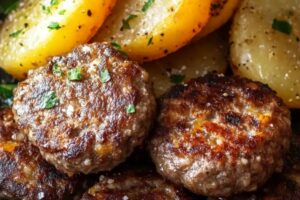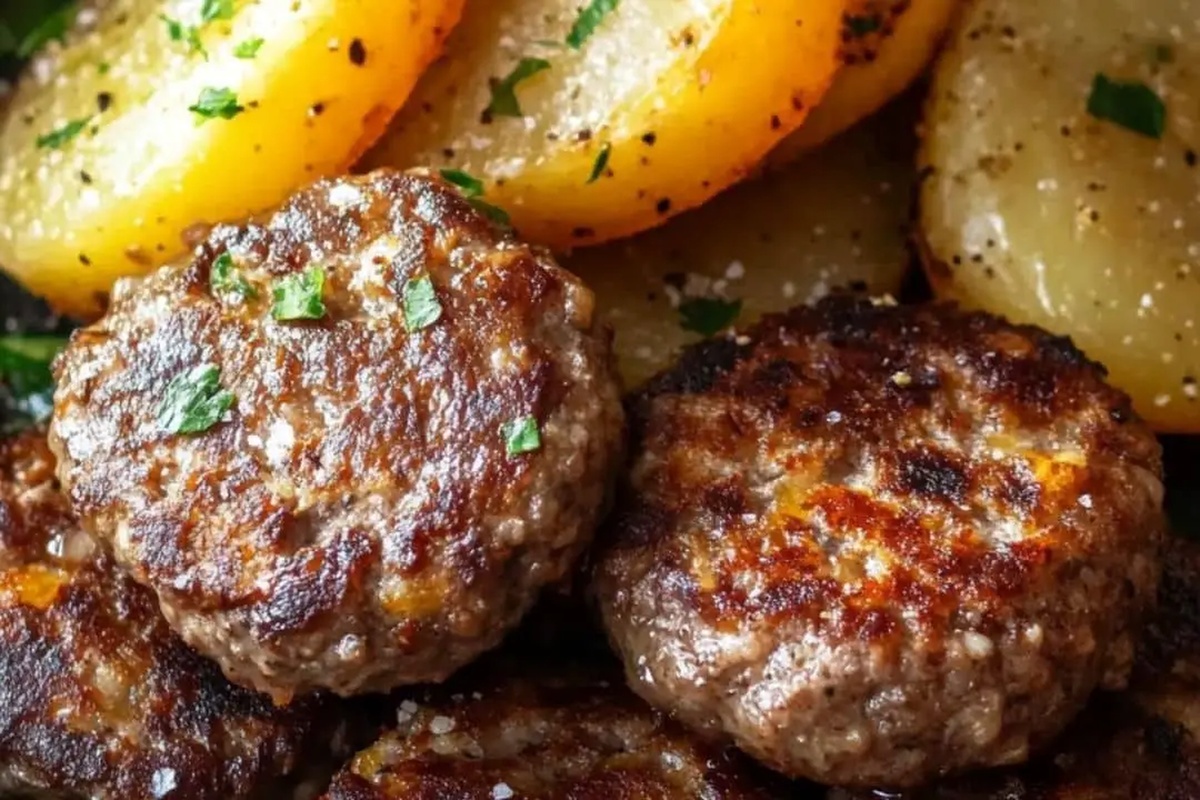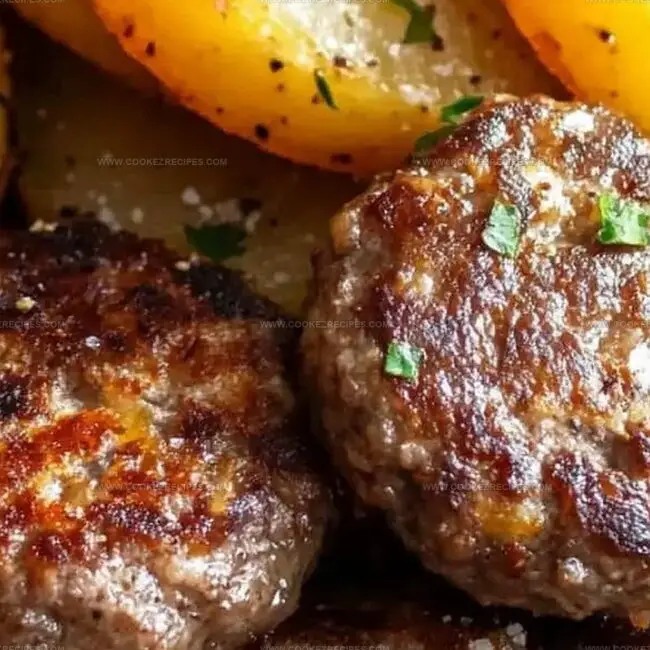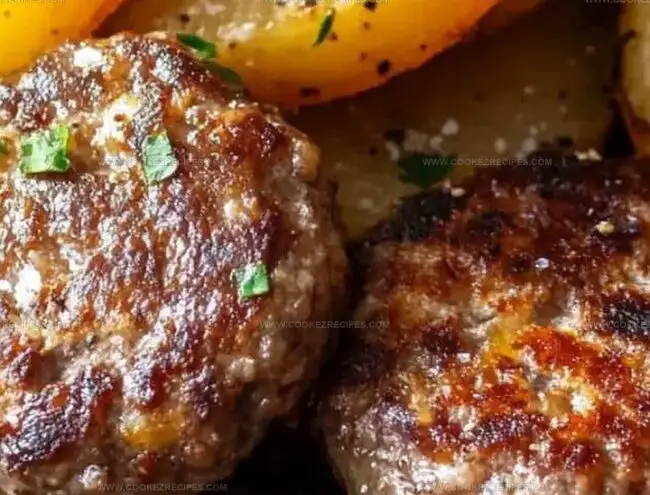Authentic German Frikadellen Recipe That Tastes Like Home
Hey, these authentic German frikadellen dance between comfort food and culinary tradition.
Meat lovers appreciate how these hearty patties became a staple across German households.
Juicy ground beef mingles with aromatic onions and herbs to create something special.
Generations have passed down this simple yet delicious recipe through family kitchens.
Personal touches make each frikadellen unique, blending tradition with individual creativity.
Hamburg-style or Berlin-inspired, these hamburgers carry regional character in every bite.
You might wonder how such simple ingredients create such remarkable flavor.
Let these classic German patties inspire your next delicious meal adventure.
German Frikadellen That Deliver True Homemade Flavor
German Hamburgers (Frikadellen) Ingredients
Meat Base:Notes: Choose meat with moderate fat content (around 20%) for best texture.
Moisture and Binding Ingredients:Flavor Enhancers:Cooking Fat:German Hamburgers Frying Directions
Step 1: Soften Bread Base
Drop stale bread slice into milk and let it soak for several minutes.
Gently squeeze out extra liquid and crumble bread into tiny fragments.
This technique helps create a moist and tender meat patty.
Step 2: Blend Tasty Ingredients
Gather ingredients for mixing:Combine everything in a large bowl, mixing gently to maintain meat’s delicate texture.
Avoid aggressive stirring which could make patties tough.
Step 3: Shape Delectable Patties
Use hands to form mixture into oval-shaped hamburgers.
Create 4-6 uniform patties approximately half-inch thick.
Press edges smoothly to prevent crumbling during cooking.
Step 4: Brown Perfectly Crispy Frikadellen
Heat skillet with oil or butter over medium temperature.
Carefully place patties into pan, cooking 4-5 minutes per side.
Ensure golden brown exterior and fully cooked center reaching 160°F internal temperature.
Step 5: Serve Delightful German Comfort Food
Transfer hot frikadellen onto serving plate.
Accompany with traditional sides like potato salad, creamy mashed potatoes, or crusty German bread for an authentic meal experience.
Meatball Making Tips for German Frikadellen
German Frikadellen Storage Guide
Great Sides for German Frikadellen
Authentic German Frikadellen Recipe (German Hamburgers) Cultural Versions
FAQs
The stale bread soaked in milk helps bind the meat mixture, adding moisture and creating a tender texture without making the frikadellen dense or heavy.
Yes, you can substitute ground beef with ground pork, turkey, or a mix of meats, but traditional German frikadellen typically use a combination of beef and pork for the best flavor.
Use a meat thermometer to check that the internal temperature reaches 160°F/71°C, which ensures the meat is safe to eat and prevents undercooking.
Absolutely! Overmixing can make the frikadellen tough and compact, so gently mix the ingredients just until combined to maintain a light, tender texture.
Print
Authentic German Frikadellen Recipe (German Hamburgers) Recipe
- Total Time: 25 minutes
- Yield: 4 1x
Description
Savor robust German Frikadellen, a hearty Hamburg classic brimming with rich ground meat and crisp herb flavors. Perfectly pan-fried patties bring German street food comfort directly to your kitchen, inviting culinary adventurers to explore traditional German cuisine.
Ingredients
Meat:
- 1 lb (450 g) ground beef (or a mix of ground beef and pork)
Aromatics and Binding Agents:
- 1 small onion, finely chopped
- 1 clove garlic, minced
- 1 egg
- 1 slice stale white bread (or 1/2 cup breadcrumbs)
- 1/4 cup milk
Seasonings and Herbs:
- 1 teaspoon mustard (Dijon or yellow mustard)
- 1 teaspoon salt
- 1/2 teaspoon black pepper
- 1/2 teaspoon paprika
- 1/2 teaspoon ground marjoram (optional)
- 1 tablespoon parsley, chopped
Cooking Fat:
- 2 tablespoons oil or butter (for frying)
Instructions
- Transform the stale bread into a milky pulp by immersing it in milk for several minutes, then gently squeeze out the excess liquid and crumble it into fine fragments.
- Assemble the frikadellen mixture in a spacious mixing vessel, incorporating ground meat, bread crumbs, finely diced onion, minced garlic, whisked egg, tangy mustard, aromatic herbs, and robust seasonings. Blend the components with a delicate touch, ensuring minimal manipulation to preserve the meat’s delicate texture.
- Carefully partition the seasoned mixture into symmetrical portions, molding each into elegant, flattened oval patties approximately half an inch thick, creating uniform culinary sculptures.
- Activate a skillet with a lustrous coating of oil or butter, establishing a medium thermal environment for cooking. Carefully nestle the patties into the heated surface, allowing them to develop a rich golden crust.
- Monitor the frikadellen during cooking, gracefully flipping them after 4-5 minutes to ensure complete caramelization and thorough internal cooking, verifying doneness through color transformation and recommended temperature.
- Present the sizzling german hamburgers alongside traditional accompaniments like velvety potato salad, creamy mashed potatoes, or a hearty slice of rustic bread, inviting diners to savor the authentic german culinary experience.
Notes
- Enhance meat texture by using a mix of ground beef and pork for more complex flavor depth.
- Keep patties moist by avoiding overworking the meat mixture, which can make them tough and dense.
- Achieve perfect browning by patting meat patties dry with paper towels before cooking to remove excess moisture.
- Make gluten-free version by substituting bread with gluten-free breadcrumbs or crushed gluten-free crackers.
- Prep Time: 10 minutes
- Cook Time: 15 minutes
- Category: Lunch, Dinner
- Method: Frying
- Cuisine: German
Nutrition
- Serving Size: 4
- Calories: 360
- Sugar: 2g
- Sodium: 600mg
- Fat: 24g
- Saturated Fat: 10g
- Unsaturated Fat: 14g
- Trans Fat: 1g
- Carbohydrates: 18g
- Fiber: 1g
- Protein: 20g
- Cholesterol: 90mg




Katherine Pierce
Recipe Curator & Food Educator
Expertise
Education
Boston University Metropolitan College
Certificate Program in the Culinary Arts
Focus: French and international cuisine techniques, Hands-on culinary training with industry professionals, Food industry insights and operations
Katherine grew up believing every dish has a story. She studied the art of food at Boston University and explored the history behind it. She loves pulling easy recipes from every corner of the world and putting them at your fingertips.
When Katherine’s not writing or testing new flavors, she’s teaching cooking classes, baking colorful mooncakes, or dreaming up new ways to mix old favorites with new twists.